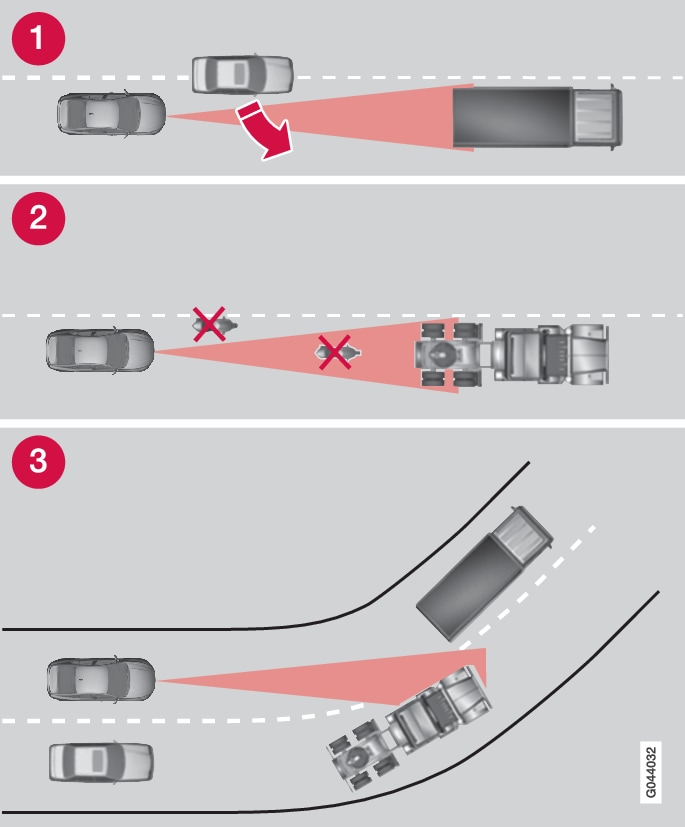The capacity of the adaptive cruise control to detect a vehicle in front is significantly reduced if:
- the speed of vehicles in front is significantly different from your own speed
- its radar sensor becomes blocked - e.g. in heavy rain or slush, or if other objects have collected in front of the radar sensor.
Note
Field of vision
The radar sensor has a limited field of vision. In some situations another vehicle is not detected, or the detection is made later than expected.

 | Sometimes the radar sensor is late at detecting vehicles at close distances - e.g. a vehicle that drives in between the car and vehicles in front. |
 | Small vehicles, such as motorcycles, or vehicles not driving in the centre of the lane can remain undetected. |
 | In bends the radar sensor may detect the wrong vehicle or lose a detected vehicle from view. |
Warning
The driver must always be observant with regard to the traffic conditions and intervene when the adaptive cruise control is not maintaining a suitable speed or suitable distance.
The adaptive cruise control cannot handle all traffic, weather and road conditions.
Read all the sections about the adaptive cruise control in the owner's manual in order to learn about its limitations, of which the driver should be aware before it is used.
The driver always bears responsibility for maintaining the correct distance and speed, even when the adaptive cruise control is being used.
Warning
Warning
Adaptive cruise control is not a collision avoidance system. The driver must intervene if the system does not detect a vehicle in front.
The adaptive cruise control does not brake for humans or animals, and not for small vehicles such as bicycles and motorcycles. Nor for oncoming, slow or stationary vehicles and objects.
Do not use the adaptive cruise control, for example, in city traffic, in dense traffic, at junctions, on slippery surfaces, with a lot of water or slush on the road, in heavy rain/snow, in poor visibility, on winding roads or on slip roads.